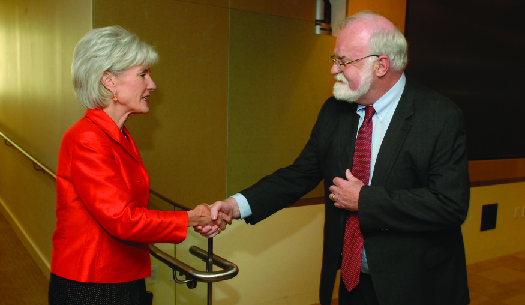| << Chapter < Page | Chapter >> Page > |
Interest groups facilitate political participation in a number of ways. Some members become active within a group, working on behalf of the organization to promote its agenda. Some interests work to increase membership, inform the public about issues the group deems important, or organize rallies and promote get-out-the-vote efforts. Sometimes groups will utilize events to mobilize existing members or encourage new members to join. For example, following Barack Obama’s presidential victory in 2008, the NRA used the election as a rallying cry for its supporters, and it continues to attack the president on the issue of guns, despite the fact that gun rights have in some ways expanded over the course of the Obama presidency. Interest groups also organize letter-writing campaigns, stage protests, and sometimes hold fundraisers for their cause or even for political campaigns.
Some interests are more broadly focused than others. AARP (formerly the American Association of Retired Persons) has approximately thirty-seven million members and advocates for individuals fifty and over on a variety of issues including health care, insurance, employment, financial security, and consumer protection (
[link] ).

Interest groups and organizations represent both private and public interests in the United States. Private interests usually seek particularized benefit s from government that favor either a single interest or a narrow set of interests. For example, corporations and political institutions may lobby government for tax exemptions, fewer regulations, or favorable laws that benefit individual companies or an industry more generally. Their goal is to promote private goods. Private goods are items individuals can own, including corporate profits. An automobile is a private good; when you purchase it, you receive ownership. Wealthy individuals are more likely to accumulate private goods, and they can sometimes obtain private goods from governments, such as tax benefits, government subsidies, or government contracts.
On the other hand,
public interest group
s attempt to promote public, or collective, goods. Such
collective good
s are benefits—tangible or intangible—that help most or all citizens. These goods are often produced collectively, and because they may not be profitable and everyone may not agree on what public goods are best for society, they are often underfunded and thus will be underproduced unless there is government involvement. The Tennessee Valley Authority, a government corporation, provides electricity in some places where it is not profitable for private firms to do so. Other examples of collective goods are public safety, highway safety, public education, and environmental protection. With some exceptions, if an environmental interest promotes clean air or water, most or all citizens are able to enjoy the result. So if the Sierra Club encourages Congress to pass legislation that improves national air quality, citizens receive the benefit regardless of whether they are members of the organization or even support the legislation. Many environmental groups are public interest groups that lobby for and raise awareness of issues that affect large segments of the population.
As the clean air example above suggests, collective goods are generally nonexcludable, meaning all or most people are entitled to the public good and cannot be prevented from enjoying it. Furthermore, collective goods are generally not subject to crowding, so that even as the population increases, people still have access to the entire public good. Thus, the military does not protect citizens only in Texas and Maryland while neglecting those in New York and Idaho, but instead it provides the collective good of national defense equally to citizens in all states. As another example, even as more cars use a public roadway, under most circumstances, additional drivers still have the option of using the same road. (High-occupancy vehicle lanes may restrict some lanes of a highway for drivers who do not car pool.)
Some interest groups represent a broad set of interests, while others focus on only a single issue. Some interests are organizations, like businesses, corporations, or governments, which register to lobby, typically to obtain some benefit from the legislature. Other interest groups consist of dues-paying members who join a group, usually voluntarily. Some organizations band together, often joining trade associations that represent their industry or field. Interest groups represent either the public interest or private interests. Private interests often lobby government for particularized benefits, which are narrowly distributed. These benefits usually accrue to wealthier members of society. Public interests, on the other hand, try to represent a broad segment of society or even all persons.

Notification Switch
Would you like to follow the 'American government' conversation and receive update notifications?